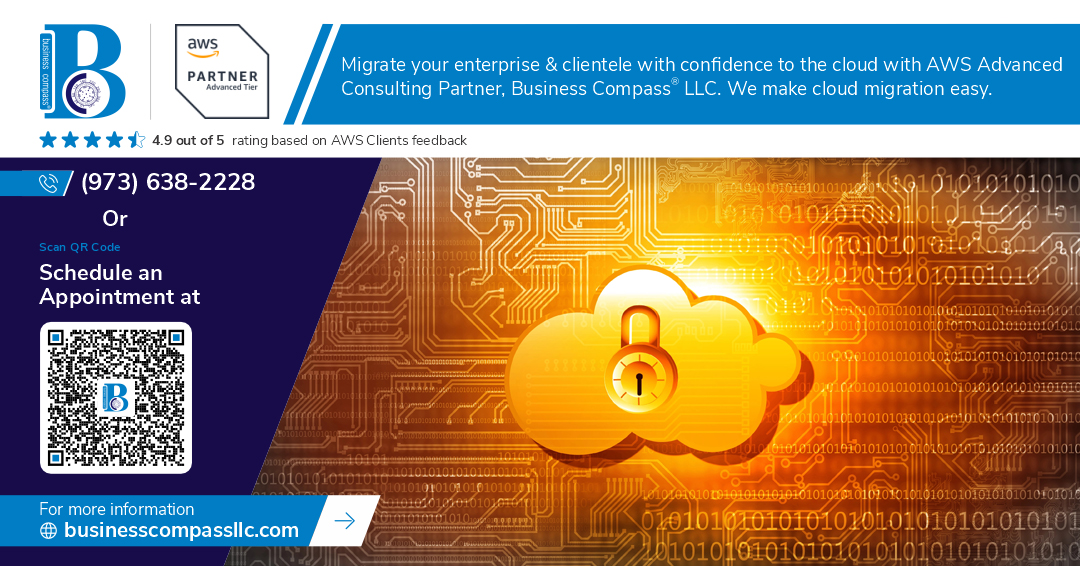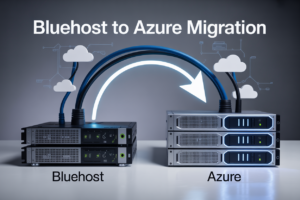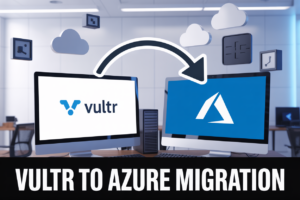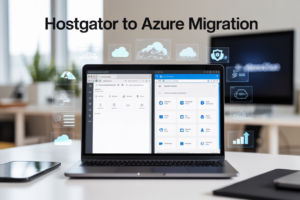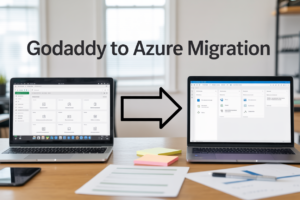Cloud security teams spend countless hours manually responding to threats, often missing critical incidents during off-hours or vacation periods. Automating cloud security through zero-touch threat remediation changes this game entirely—your AWS environment can now detect, analyze, and neutralize threats without human intervention.
This guide is designed for cloud security engineers, DevSecOps professionals, and IT managers who want to build robust automated threat response AWS systems that work around the clock. You’ll learn how to create security workflows that respond faster than any human team could manage.
We’ll walk through setting up AWS Lambda security automation to handle immediate threat responses and show you how to build comprehensive security workflows using AWS Step Functions security workflows. You’ll also discover how AWS EventBridge threat detection can trigger instant responses to suspicious activities across your entire cloud infrastructure.
By the end, you’ll have the knowledge to implement a complete automated incident response system that protects your AWS environment 24/7 without requiring constant manual oversight.
Understanding Zero-Touch Threat Remediation in Cloud Environments
Defining automated security response without human intervention
Zero-touch threat remediation represents a paradigm shift in cloud security where AWS cloud security automation handles incident detection, analysis, and response without requiring human intervention. This approach leverages machine learning algorithms, predefined security playbooks, and intelligent orchestration to identify threats and execute countermeasures in real-time. When suspicious activities occur, automated systems immediately analyze patterns, cross-reference threat intelligence databases, and deploy appropriate responses ranging from isolating compromised resources to blocking malicious IP addresses. The system operates continuously, processing thousands of security events simultaneously while maintaining consistent response quality regardless of time or staffing availability.
Key benefits of eliminating manual threat handling processes
Automated incident response dramatically reduces mean time to resolution from hours to seconds, minimizing the window of vulnerability that attackers can exploit. Manual processes often suffer from human error, inconsistent responses, and delayed reactions during off-hours or high-stress situations. Zero-touch systems eliminate these variables by executing proven response procedures with precision every time. Organizations achieve significant cost savings by reducing the need for round-the-clock security operations center staffing while simultaneously improving security posture. The approach also enables security teams to focus on strategic initiatives rather than repetitive incident handling tasks.
Critical components required for successful zero-touch implementation
Successful automated threat response AWS implementation requires robust event collection through CloudWatch, comprehensive threat detection capabilities, and well-defined response playbooks that account for various attack scenarios. Cloud security orchestration platforms must integrate seamlessly with existing AWS services including IAM for access controls, VPC for network segmentation, and AWS Config for compliance monitoring. Machine learning cloud security models need extensive training data to accurately distinguish between legitimate activities and genuine threats, reducing false positives that could disrupt business operations. Proper backup and rollback mechanisms ensure that automated responses can be reversed if needed without causing service disruptions.
Essential AWS Security Services for Automated Threat Detection
Amazon GuardDuty for intelligent threat detection and analysis
GuardDuty acts as your cloud security watchdog, using machine learning and threat intelligence to spot suspicious activity across your AWS environment. This service analyzes DNS logs, VPC Flow Logs, and CloudTrail events to catch everything from cryptocurrency mining to data exfiltration attempts. The beauty lies in its zero-configuration deployment – simply enable it and GuardDuty starts learning your network patterns immediately. When threats emerge, it generates detailed findings with severity scores, making automated threat response decisions straightforward. GuardDuty’s integration with AWS cloud security automation workflows means suspicious IP addresses can be blocked instantly, compromised instances isolated, and security teams alerted without human intervention.
AWS Security Hub for centralized security findings management
Security Hub transforms chaotic security alerts into actionable intelligence by aggregating findings from multiple AWS security services and third-party tools. This centralized dashboard eliminates the need to jump between different consoles when investigating threats. Security Hub normalizes findings using the AWS Security Finding Format, making it easier to build automated threat response AWS workflows that can process alerts consistently. The service provides security scores and compliance status dashboards, helping teams prioritize which threats need immediate attention. Custom insights and automated remediation actions can be triggered based on finding patterns, creating a robust foundation for zero-touch threat remediation systems.
AWS Config for continuous compliance monitoring and assessment
Config continuously monitors your AWS resources and evaluates them against security best practices and compliance frameworks. Think of it as your infrastructure’s compliance auditor that never sleeps. When resources drift from approved configurations, Config triggers remediation actions automatically through AWS Lambda functions or Systems Manager. This service excels at catching misconfigurations before they become security vulnerabilities – like S3 buckets accidentally made public or security groups with overly permissive rules. Config’s timeline feature provides forensic capabilities, showing exactly when and how resources changed, which proves invaluable during incident response investigations.
Amazon Inspector for automated vulnerability assessments
Inspector takes the manual work out of vulnerability management by automatically scanning your EC2 instances and container images for security weaknesses. This service integrates seamlessly with your CI/CD pipelines, catching vulnerabilities before they reach production. Inspector compares your systems against CVE databases and security benchmarks, providing detailed remediation guidance for each finding. The service prioritizes vulnerabilities based on exploitability and network reachability, helping automated systems focus on the most critical issues first. When Inspector discovers high-severity vulnerabilities, cloud security orchestration workflows can automatically patch systems or isolate affected resources until manual review occurs.
Building Automated Response Workflows with AWS Lambda and Step Functions
Creating serverless functions for instant threat response actions
AWS Lambda serves as the backbone for instant threat response, enabling organizations to deploy lightweight, event-driven functions that execute security remediation tasks within milliseconds. These serverless functions automatically trigger when threats are detected, performing actions like blocking suspicious IP addresses, isolating compromised instances, or revoking unauthorized access tokens without human intervention.
Orchestrating complex remediation workflows using Step Functions
AWS Step Functions transforms individual Lambda functions into sophisticated security orchestration workflows, connecting multiple remediation steps through visual state machines. Complex scenarios like multi-stage incident response—encompassing threat validation, asset isolation, evidence collection, and stakeholder notification—become manageable through Step Functions’ ability to coordinate distributed security services while maintaining clear audit trails for compliance requirements.
Implementing conditional logic for different threat severity levels
Smart threat classification drives automated response intensity through conditional branching logic within Step Functions workflows. High-severity threats like ransomware detection trigger immediate network isolation and backup activation, while low-severity anomalies might only generate alerts and increase monitoring. This tiered approach prevents over-reaction to minor security events while ensuring critical threats receive immediate, comprehensive remediation through AWS Lambda security automation.
Establishing retry mechanisms and error handling protocols
Robust error handling ensures zero-touch security systems remain operational during network disruptions or service failures. Step Functions provides built-in retry mechanisms with exponential backoff strategies, while Lambda functions implement circuit breaker patterns to prevent cascading failures. Dead letter queues capture failed remediation attempts for manual review, and CloudWatch alarms monitor workflow health, automatically scaling response capacity during security incidents to maintain consistent automated threat response AWS capabilities.
Real-Time Threat Response Using AWS EventBridge and CloudWatch
Setting up event-driven triggers for immediate threat detection
AWS EventBridge acts as the central nervous system for automated threat response AWS systems, capturing security events from multiple sources including GuardDuty, Security Hub, and CloudTrail. Create custom event patterns that match specific threat indicators like unusual API calls, failed authentication attempts, or suspicious network traffic. Configure EventBridge rules to filter events based on severity levels, resource types, or geographic locations. Connect these triggers directly to Lambda functions for instant response actions, ensuring your cloud security automation reacts within seconds of threat detection.
Configuring automated alerts and notification systems
CloudWatch Alarms integrate seamlessly with EventBridge to create multi-layered notification systems that scale with your security needs. Set up metric-based alarms for anomalous behavior patterns, failed login attempts, or unauthorized resource modifications. Route critical alerts through SNS topics to security teams via email, SMS, or Slack channels while simultaneously triggering automated remediation workflows. Create escalation paths that notify different stakeholders based on threat severity, ensuring the right people receive relevant information without overwhelming your team with false positives.
Implementing custom metrics for security event monitoring
Custom CloudWatch metrics provide granular visibility into your zero-touch threat remediation performance and security posture. Track key indicators like response times, successful remediation rates, and threat detection accuracy across different AWS services. Build dashboards that visualize security trends, allowing teams to identify patterns and optimize their cloud security orchestration strategies. Implement log aggregation from Lambda functions, Step Functions, and other automation components to create comprehensive audit trails that support compliance requirements and continuous improvement of your automated incident response capabilities.
Automated Infrastructure Protection and Isolation Strategies
Dynamic Security Group Modifications for Network Isolation
AWS Security Groups act as virtual firewalls that can be programmatically modified to instantly isolate compromised resources. When threat detection systems identify suspicious activity, automated workflows can trigger Lambda functions to revoke inbound and outbound rules, effectively cutting off network access. This approach creates immediate containment while preserving the ability to restore connectivity after investigation. CloudFormation templates can define baseline security group configurations, while EventBridge rules coordinate rapid rule modifications across multiple security groups simultaneously for comprehensive network segmentation.
Automated EC2 Instance Quarantine and Snapshot Creation
Suspicious EC2 instances require immediate isolation while preserving forensic evidence. Automated remediation workflows can move compromised instances to dedicated quarantine security groups, create EBS snapshots for investigation, and launch replacement instances from clean AMIs. Systems Manager Run Command executes isolation scripts directly on instances, while Step Functions orchestrate the complete quarantine process including network isolation, data preservation, and stakeholder notifications. This zero-touch approach ensures rapid containment without manual intervention or evidence loss.
Immediate IAM Policy Restrictions for Compromised Accounts
Compromised user accounts demand instant privilege restriction to prevent further damage. Automated systems can attach restrictive IAM policies that deny all actions except basic read operations, disable API keys, and force MFA requirements. Lambda functions can evaluate CloudTrail logs to identify anomalous account behavior and trigger immediate policy modifications through the IAM API. Policy templates define various restriction levels, from partial access reduction to complete account lockdown, allowing graduated responses based on threat severity and business impact requirements.
Automatic S3 Bucket Access Revocation and Encryption Enforcement
S3 bucket compromise requires swift access control modifications and data protection enforcement. Automated responses can remove public access permissions, revoke cross-account access policies, and enable server-side encryption with customer-managed KMS keys. Bucket policies can be dynamically updated to restrict access to specific IP ranges or require MFA for sensitive operations. CloudWatch metrics monitor bucket access patterns while automated systems can trigger immediate policy changes when unusual activity patterns emerge, ensuring data protection through programmatic security controls and encryption enforcement.
Implementing Machine Learning-Enhanced Threat Intelligence
Leveraging Amazon Macie for Data Classification and Protection
Amazon Macie automatically discovers, classifies, and protects sensitive data across S3 buckets using machine learning algorithms. The service identifies personally identifiable information (PII), financial data, and intellectual property, then generates detailed security findings. When integrated with automated threat response workflows, Macie triggers immediate protective actions like data encryption, access restriction, or quarantine procedures. Custom data identifiers enhance detection accuracy for organization-specific sensitive information patterns, while automated remediation policies ensure rapid response to data exposure threats without manual intervention.
Using AWS Comprehend for Advanced Threat Pattern Recognition
AWS Comprehend analyzes unstructured security logs, incident reports, and threat intelligence documents to extract meaningful insights using natural language processing. The service identifies anomalous communication patterns, suspicious entities, and emerging threat indicators from massive datasets. Machine learning models trained on security-specific corpora detect subtle attack patterns that traditional rule-based systems miss. Automated workflows process Comprehend outputs to update security policies, block malicious domains, and generate threat intelligence reports, creating a self-improving defense mechanism that adapts to evolving attack vectors.
Integrating Third-Party Threat Intelligence Feeds Automatically
Automated threat intelligence integration connects multiple external feeds through AWS Lambda functions and EventBridge rules, creating a comprehensive security intelligence pipeline. API connectors pull indicators of compromise (IoCs) from commercial and open-source feeds, while data normalization functions standardize formats across different sources. Machine learning algorithms correlate threat indicators with internal security events, automatically updating firewall rules, DNS blocklists, and intrusion detection signatures. This continuous intelligence enrichment enables proactive threat hunting and preemptive security controls without human oversight.
Monitoring and Optimizing Zero-Touch Security Performance
Tracking Remediation Success Rates and Response Times
Effective monitoring of AWS cloud security automation requires comprehensive metrics that reveal how quickly your zero-touch threat remediation systems detect and neutralize threats. Track mean time to detection (MTTD) and mean time to response (MTTR) using CloudWatch dashboards that aggregate data from Lambda functions, EventBridge rules, and Step Functions workflows. Set up automated alerts when response times exceed predetermined thresholds, indicating potential bottlenecks in your security orchestration pipeline. Monitor remediation success rates by categorizing threat types and measuring the percentage of incidents that are automatically resolved without manual intervention. Use AWS X-Ray to trace the complete journey of security events through your automated response system, identifying delays or failures in specific components. Create detailed reports showing how your zero-touch systems perform across different threat vectors, time periods, and infrastructure components to establish baseline performance metrics and identify areas for optimization.
Identifying False Positive Patterns for System Refinement
Machine learning cloud security systems generate false positives that can overwhelm security teams and waste computational resources. Analyze historical security events using Amazon CloudWatch Logs Insights to identify recurring patterns in false alarms, such as specific IP ranges, user behaviors, or application activities that consistently trigger incorrect threat classifications. Build feedback loops that allow security analysts to mark events as false positives, feeding this data back into your automated threat response AWS workflows to improve accuracy over time. Use AWS Lambda security automation to implement dynamic thresholds that adjust based on environmental context, reducing noise from legitimate business activities. Create correlation rules that cross-reference multiple data sources before triggering automated responses, preventing single-point-of-failure decisions. Implement A/B testing for security rules using AWS Step Functions security workflows, comparing the effectiveness of different detection algorithms and gradually rolling out improvements that reduce false positive rates while maintaining threat detection capabilities.
Measuring Cost Savings from Automated Versus Manual Responses
Calculate the true return on investment of your AWS cloud security automation by comparing the costs of automated versus manual incident response processes. Factor in the average hourly cost of security personnel, the time required for manual threat investigation and remediation, and the potential business impact of delayed responses to security incidents. Track how cloud security orchestration reduces the need for after-hours emergency responses and weekend security team interventions. Measure the cost of AWS services used in automated responses (Lambda invocations, Step Functions executions, CloudWatch logs storage) against the salary costs saved through reduced manual intervention. Document how zero-touch threat remediation minimizes the blast radius of security incidents by responding faster than human operators, potentially saving thousands of dollars in business disruption costs. Create monthly cost analysis reports that show the cumulative savings achieved through automation, including reduced mean time to containment and the prevention of security incidents from escalating into major breaches requiring expensive forensic investigations and regulatory compliance efforts.
Cloud security doesn’t have to keep you up at night anymore. With AWS’s powerful automation tools, you can build a defense system that responds to threats faster than any human ever could. From Lambda functions that spring into action the moment a threat is detected to machine learning models that get smarter with every attack attempt, these services work together to create an invisible shield around your infrastructure. The best part? Once you set it up right, it runs itself.
The key is starting small and building up your automated responses over time. Pick one common threat scenario, automate that response completely, then move on to the next one. Your future self will thank you when you’re sipping coffee while your systems handle security incidents automatically. Ready to take the leap? Start with EventBridge and CloudWatch integration – it’s the foundation that makes everything else possible.










